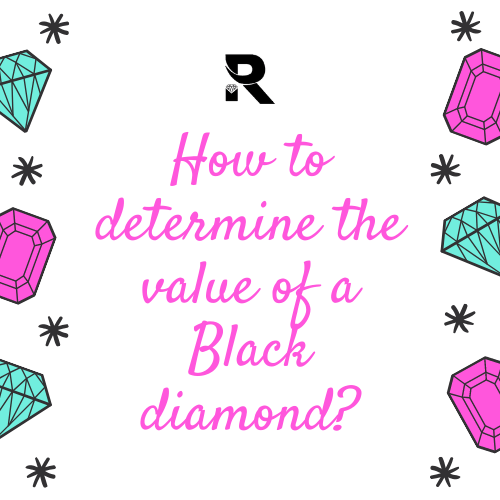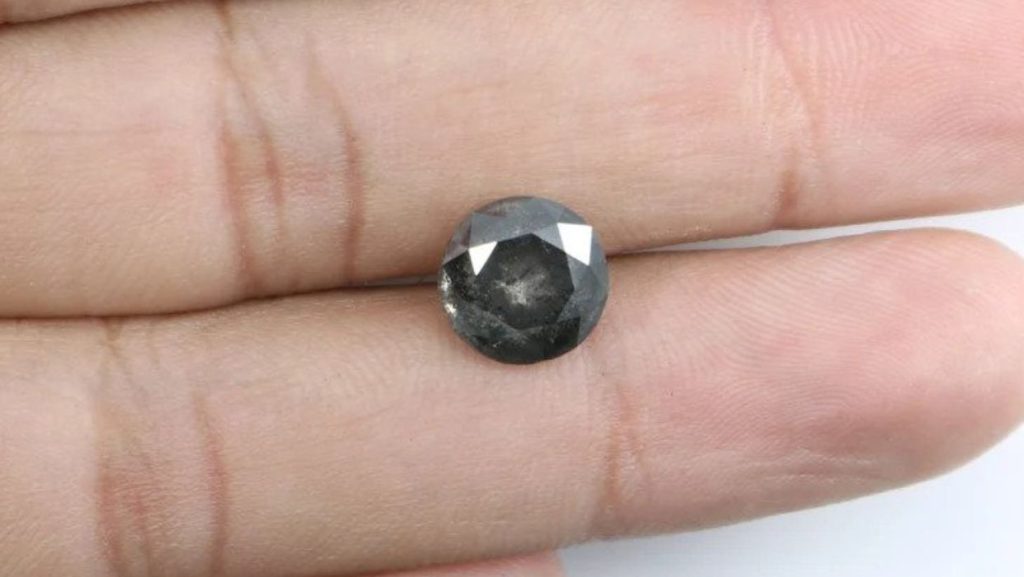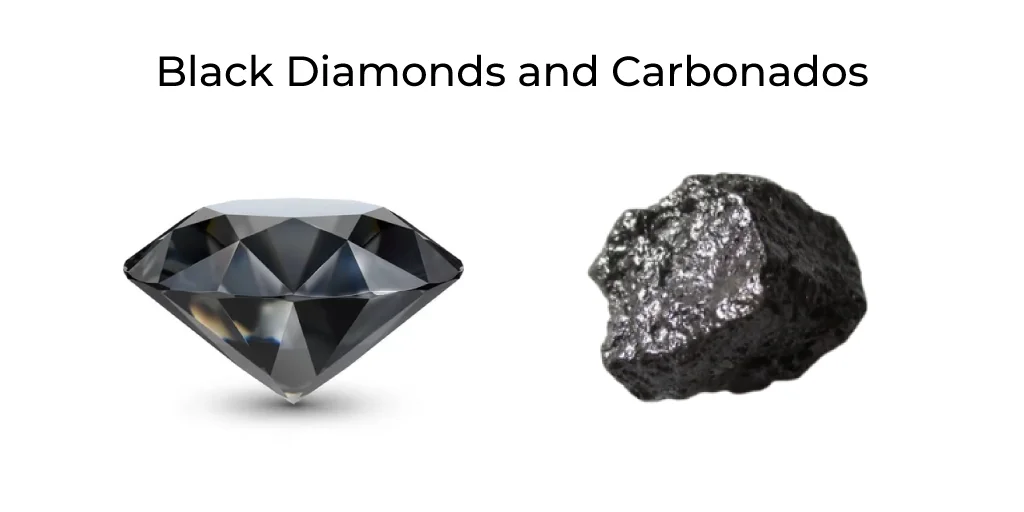
Carbonado, or in other words, a natural black diamond, is collectively made from graphite, carbon, and other impurities which are incorporated in the diamond’s polycrystalline structure. It is commonly used to make jewelry such as engagement rings, bracelets, necklaces, earrings, pendants, etc.
In this blog, we’ll delve into the intriguing world of these enigmatic diamonds, exploring their formation, types, value, and the mysteries that surround them.
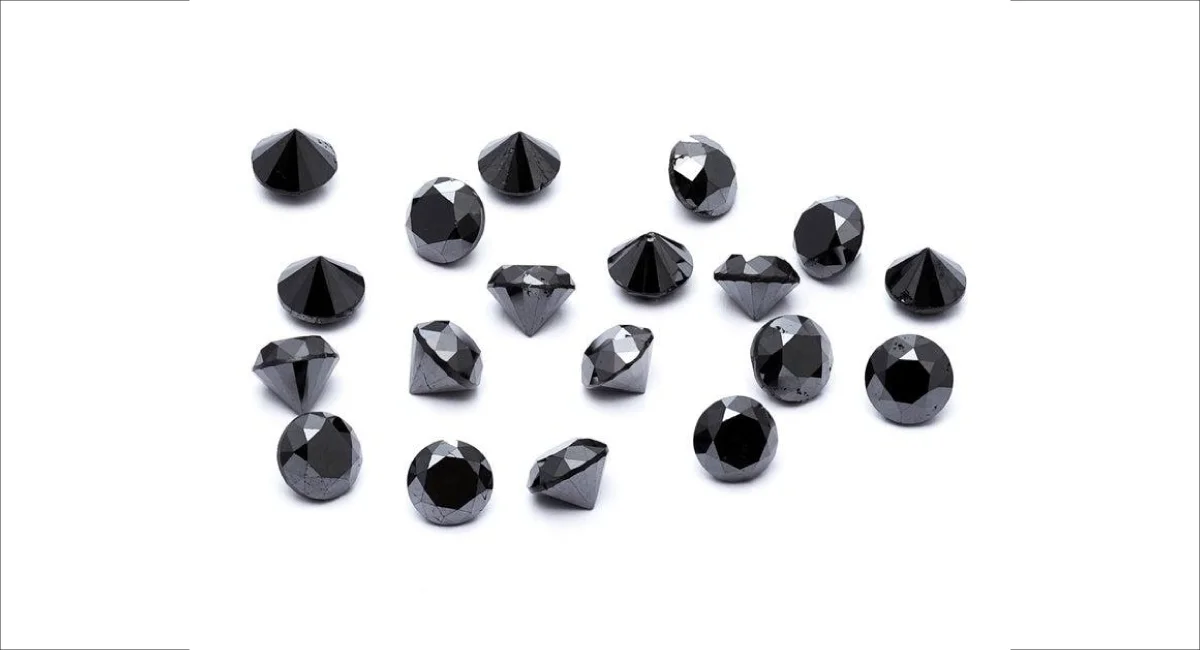
Such types of diamonds are found in the sediments of Brazil as well as the Central African Republic. It is given the name ‘carbon’ in regions like Eastern Australia and Venezuela. Hence, carbonados and black diamonds mean the same thing. These words, however, are used interchangeably.
Carbonados were said to be created in a planetary nebula approximately 4 billion years ago, a long time before the foundation of our Giant Planets. According to geoscientists, a large meteorite mass fell on the Earth, and carbonados were found there. Today, the place of impact is known as some parts of Brazil and Central Africa.
The majority of carbonados have a pretty vibrant glow. Carbonado seems opaque from the outside. It is made from crystals and impurities arranged naturally at different angles, which helps absorb light and gives the stone a metallic luster.
Its unusual constitution hints at the possibility of exotic origination, therefore appealing to the interests of the public. Let us now look at different aspects of this type of diamond to help you make an informed choice for any future purchase.
What are Black Diamonds?
Black diamonds are diamonds with a high number of inclusions. These gems are classified as fancy-colored diamonds, similar to pink, red, green, brown, yellow, or bluecolored diamonds. The grading of black diamonds is done differently than that of white diamonds.
There are various stories you’ll find in respect of its origin. Some believe it has either formed from the fission of uranium and thorium. Others believe it to arise from an asteroid effect, some two-four million years ago in outer space far beyond Earth and later came here.
While inclusions on a standard white diamond might appear as small tiny spots, this gem is filled with inclusions at very undeniable levels. Thus, in turn, getting its name a black diamond.
This diamond got more importance in the late twenties. If you are looking out for a black diamond but don’t know where to start, don’t worry we have you covered.
Types of Black Diamonds: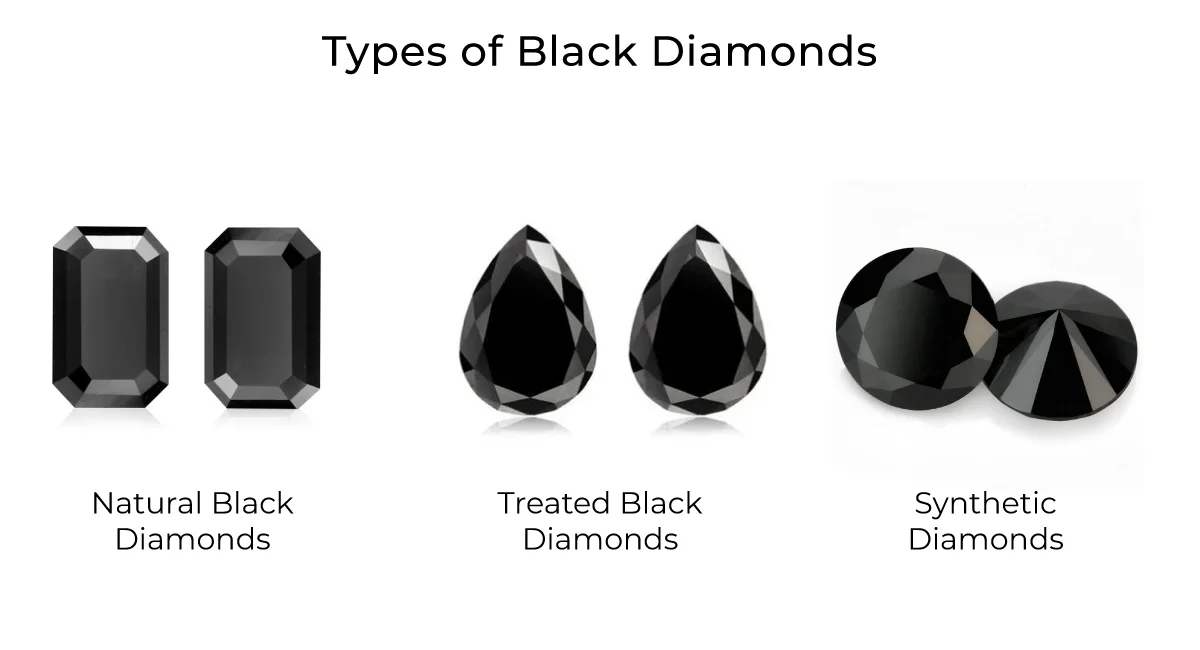
There are three types of black diamond differentiated based on origin
- Natural Black Diamonds: It is clear from the name itself that these black diamonds occurred naturally. It just needs to be cut, polished, and fit onto a piece of jewelry. No additional color is added to it. It originally appeared black. And a good quality natural black diamond will look ten folds better than any black stone you can find in the market.
- Treated black diamonds: When you shop for your jewelry, you will likely come across a diamond. This diamond is commonly sold among other diamonds. Irradiation and heating make this diamond appear completely black. How? A white diamond with many inclusions under high pressure and temperatures is treated to make its surface completely black. This type of black diamond comes cheaper than natural black diamonds.
- Man Made synthetic diamonds: A minor difference from natural diamonds creates a new category of industrial diamonds. Man Made black diamonds are similar to natural black diamonds in their chemical compositions but differ from them as they are not formed naturally. Instead, they are created in laboratories by performing controlled chemical reactions. It is similar to treating black diamonds in that they are also produced from white diamonds but of comparatively high quality.
How Do Black Diamonds Get Their Color?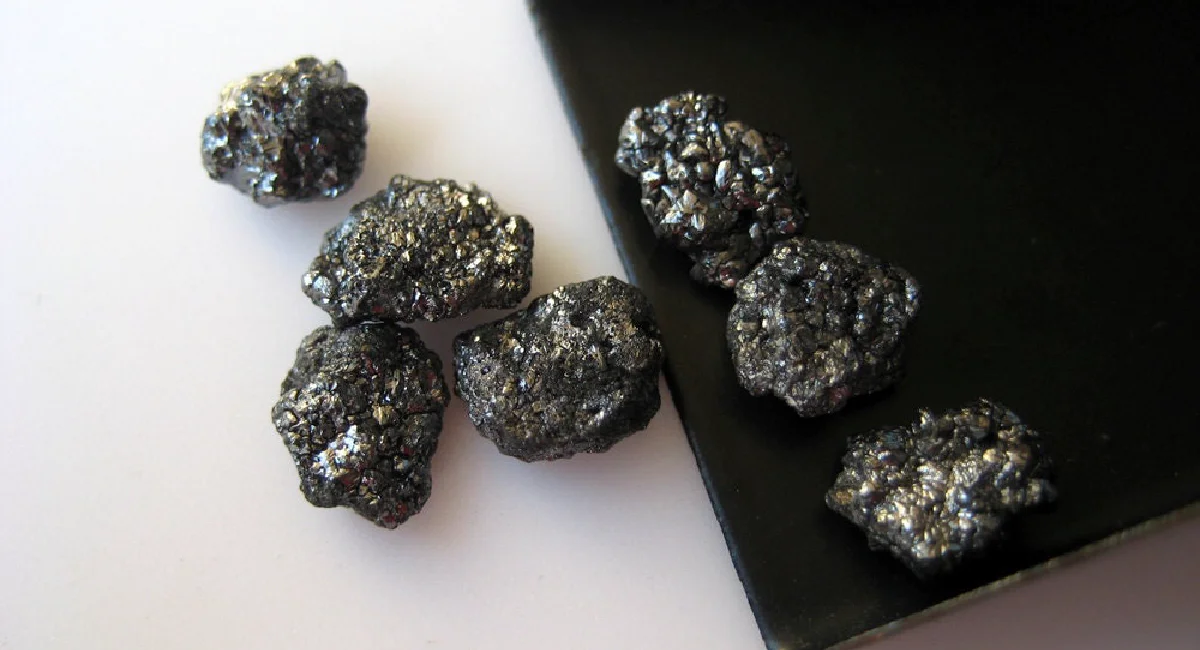
Dark inclusions inside the diamond make it the darkest of all other diamonds. The primary hue among these diamonds might be nearly colorless, brown, or turquoise. Additionally, the hue is caused by a cluster of interior breaches and necklines that have been graphitized and dyed black.
But within contrast, black diamonds are white diamonds with an exceptionally high concentration of inclusions within them to the stage that they indeed appear black. These inclusions can be graphite, pyrite, or even hematite.
While “normal” natural-colored gemstones get their color from particulates associated with them during the initial formation, black diamonds are close to white diamonds.
As far as lab-created diamonds are concerned, it is made from the highest temperatures and pressures (HPHT method), which in turn darkens the texture of the diamond. Technicians “produce” graphene inclusions for thermal treatment. But talking about carbonados, methods like irradiation and dyeing are used.
What are Carbonados?
Related yet interesting, during that time, yakitate, a similar material, was discovered in Russia. It was more translucent than those other diamonds and exhibited a green appearance of black or dark gray.
In contrast to other naturally occurring polycrystalline diamonds, carbonado lacks throne imperfections and, in turn, exhibits a relatively low isotope ratio content. Carbonado shows significant essence (photoluminescence and cathodoluminescence) that is triggered by either ammonia or molecular geometry vacancies.
The luminescence analysis indicates that radioactive inclusions were present during the carbonado production process. Meaning it was already there and not acquired later on.
Questions about the carbonado’s origin have arisen due to these and other qualities that set it apart from other diamonds. Many believe that carbonado was formed in outer space and a large mass fell on the Earth like a meteorite. This may be why it has such exceptional qualities that other fancy-colored diamonds do not.
Carbonado is the most surprising type of jewel on The planet. Finding the beginning of carbonado would proclaim an entirely different method of precious stone development and could address an excellent variety of extraterrestrial carbon conveyance to Earth.
The Value of Carbonado in Cutting
The value of a pure carbonado is around $3000 per carat only when it is entirely natural and not heat-treated.
The average per-carat price of a heat-treated carbonado is $200. That is relatively cheap compared to other fancy-colored diamonds or the infamous white-colored diamond. Due to their low price, these black diamonds are widely used in cutting and grinding applications across industries.
Cutting a carbonado and styling it into a piece of jewelry is different. That can be done but only with high-quality carbonados.
Black Diamonds Rarity & Pricing
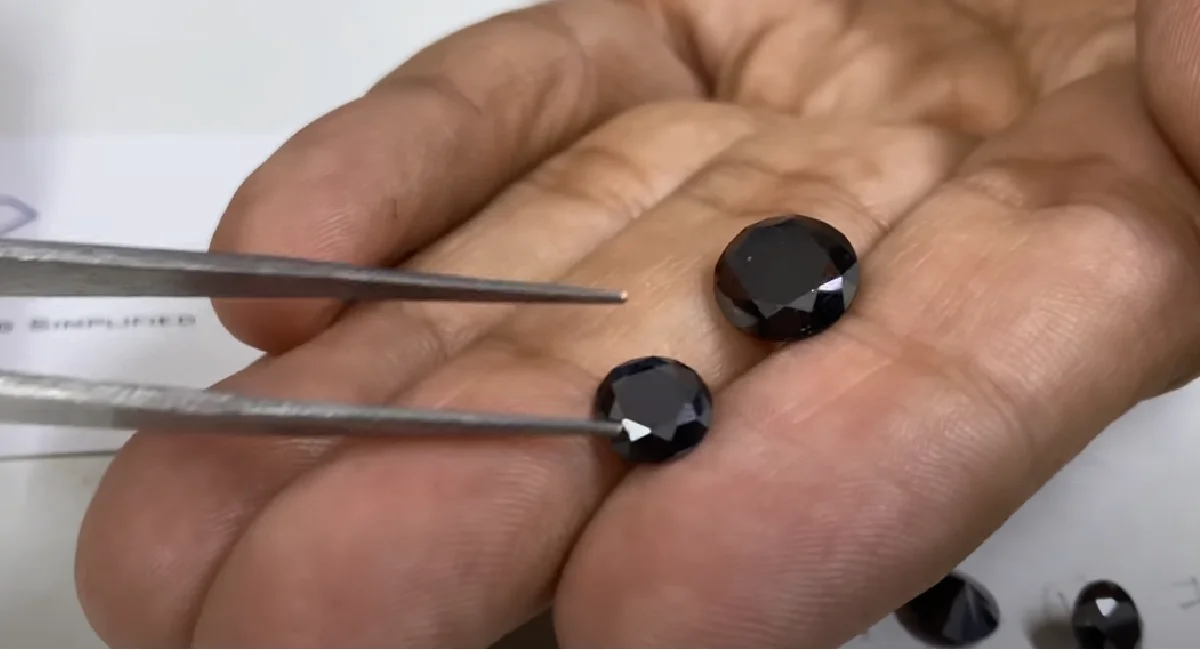
The formation of black diamonds is believed to occur due to a different process than that of colorless diamonds. This distinct formation process accounts for their scarcity and unique appearance.
The depth and intensity of a black diamond’s color play a significant role in determining its price. The cut and carat weight also influence the pricing of natural black diamonds. Like colorless diamonds, black diamonds are graded for clarity. Diamonds with fewer inclusions and blemishes command higher prices due to their enhanced brilliance.
Suppose you are looking out for an affordable option. Natural black diamonds are comparatively cheaper than other diamonds. A high-quality natural black diamond will cost anywhere between $3000 and $5000/carat.
Fancy black diamonds naturally occurring are not easy to find and thus considered rare. Heat-treated black diamonds & artificial black diamonds are easier to find and are not so rare.
So, whether a black diamond is a heat-treated natural diamond or an untreated natural diamond determines its average cost. Black diamonds that have been processed usually cost around $300 per carat.
Make your black diamond best price purchase even more delightful by acquiring a personalized promo code from the knowledgeable gemologist at RRP Diamond.
Are Black Diamonds Valuable?
The answer to this is obvious, yes. Talking about the natural black diamond uniqueness, it is extremely rare, and it is very valuable.
Due to less originally colored diamonds, it becomes more valuable when you look at their authenticity, largeness and uniqueness.
While you contrast the costs of black diamonds with those other valuable beauties, you’ll discover that such jewels fall between standard gemstones and top-tier diamonds.
Their scarcity, unique formation process, and captivating color make them highly sought after in the world of diamonds and jewelry. However, due to their limited supply, black diamonds may command higher prices than other diamonds of similar size and quality.
Conclusion
Because of their rarity and affordability, black diamonds are among the growing trendy diamonds. Also, there are many options available in different shapes for carbonados which will attract you even more to the black diamond market.
But the problem arises while analyzing it as a natural or heated diamond. Next time while selecting the type of stone you choose for your jewelry, you need to look at it carefully and, if possible, get it checked by an expert gemologist.
FAQs
Are natural black diamonds treated to achieve their color?
No, natural black diamonds are not treated. Their captivating black color is entirely natural and the result of unique inclusions within the diamond’s structure.
Are natural black diamonds more expensive than colorless diamonds?
Yes, natural black diamonds are generally more expensive than colorless diamonds due to their rarity and unique appeal.
Where are carbonados typically found?
Carbonados have been found in several locations worldwide, including Brazil and the Central African Republic. These unique diamonds are often associated with riverbeds and other sedimentary environments.
Can carbonados be used in jewelry like regular diamonds?
Carbonados are much tougher and more challenging to cut than traditional diamonds due to their polycrystalline structure. As a result, they are not commonly used in mainstream jewelry but are occasionally sought after by collectors for their rarity and distinctive appearance.
Can black diamonds be used in jewelry?
Yes, black diamonds are used in jewelry, especially in contemporary and unique designs. They add a striking and unconventional touch to rings, necklaces, bracelets, pendants, and other accessories.
